Aspirations of FreedomA History of the
Philippines 
The Filipino people have always aspired for freedom. The Spanish firing squad could not silence
Dr. Jose Rizal
(Jose Protacio Rizal Mercado) on December 30, 1896. His writings described the injustices at the hands of the colonial Spanish and the Friars. His death enflamed the nation and a cry for freedom went throughout the land.
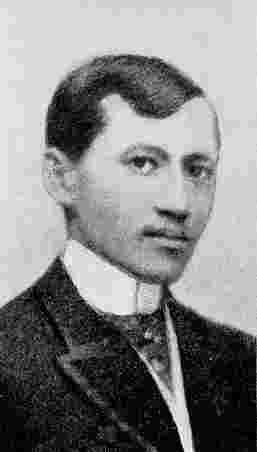
Dr. Jose Rizal (1861-1896)
Just before the turn of the century the Philippines declared
independence from Spain and struggled to throw off the last vestiges of Spanish colonialism.
The Philippines was the first Republic in Asia, but the dream of independence
was short lived. In 1898 The Americans came as "liberators" from the Spanish, but by 1901, the Americans under President McKinley colonized the Philippines in the name of "civilization, democracy, and Christianity" and a bloody struggle
ensued.
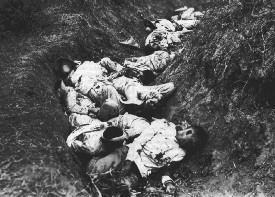 National Archives photo #111-RB-1037. First days of the Philippine Insurrection.
It was not long before Emilio Aguinaldo, First
President of the Philippines, yielded to the United States. 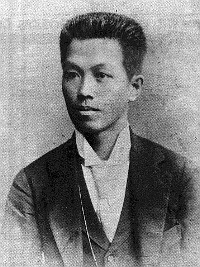
Emilio Aguinaldo (1869-1964)
My nation cannot remain indifferent in view of such violent
and aggressive seizure of a portion of its territory by a nation which has
arrogated to itself the title: champion of oppressed nations.
-- Gen. Emilio Aguinaldo, 1898
Among the worst atrocities was the massacre of civilian population of
Balangiga, Samar.
According to US military accounts, one Sunday in September 1901 a local police chief grabbed the rifle of a 23-year-old US sentry named Adolph Gamlin and smashed its butt across his head. A few minutes later, the bell in the church in Balangiga began to peal. As the bell pealed, hundreds of Filipino freedom fighters poured out of the church disguised as women mourners and carrying coffins filled with bolos and attacked a company of US troops who were caught off guard as they ambled out of their quarters for breakfast. All in all, 74 US soldiers died. Many of them were pursued by sharks or drowned as survivors retreated.
Brig. Gen. Jacob Smith, a former Indian fighter, order the
scorched earth policy in response to the military setback and American troops burned many of the fields and destroyed farms creating a famine that was responsible for the majority of the Filipino deaths. Smith also order the deaths of every Filipino over the age of 10. Balangiga was eventually taken and the entire civilian population was butchered and the church bell looted.
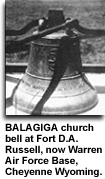
The Church Bell of Balangiga today hang on the parade grounds of
F.E. Warren AFB, in Cheyenne, WY. A gesture to return the Bell was presented in Congress in 1997 however no action or vote was taken. Nearly 100 years later this little known war would be called
The Philippine Insurrection. The blood shed lasted over 10 years, and the American Era began.
Several famous Americans became associated with the Philippines during this era. After the death of President McKinley, President Theodore Roosevelt appointed William H. Taft to be
Governor General of the Philippines. He formed the core of the civil service in the new Commonwealth. General Douglas MacArthur grew up in the Philippines. His Father, Arthur MacArthur fought the Spanish at Manila Bay with Admiral Dewey.
What was taken from the Philippines in blood was given back in blood with the sacrifice of American servicemen who are buried on Philippine soil to create a new
independent nation.
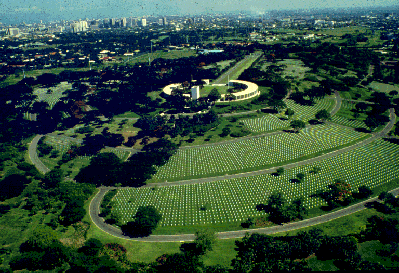 The American Cemetery at Manila
As the nation grew and matured, freedom was lost from within. President Ferdinand Marcos seized power and ruled the country in a ruthless dictatorship for 14 years.
Marcos tried to overcome the will of the people by force and instead created martyrs. In 1986, a near bloodless coup
occurred and democratic processes were restored. The future of the Philippines is still unclear, but it will be the Filipino people who will have the last word.
Filipinos have visited America for many, many years. In 1763 Filipinos started to live in the United States. Seamen, called the "Manilamen,"
jumped ship off New Orleans, Louisiana, and Acapulco, Mexico, during the Spanish
galleon trade and settled in the bayous of Louisiana. Filipino and Mexican priests accompanied Fray Junipero Serra into California to establish missions.
When the next Census is taken in 2000, Filipinos are expected to become the largest
Asian ethnic group. Tagalog, the most widely spoken Filipino language
(officially the National Language along with English) is the sixth largest
language spoken in the United States. When many Americans refer to Asian
Americans, they know more about the Japanese and the Chinese, more so than about
the Filipinos. Filipinos are often mistaken for Japanese or Chinese. Filipino
Americans, indeed, in spite of their achievements and contributions to American
culture and society, are still a little-known ethnic group, as far as the
American mainstream is concerned.
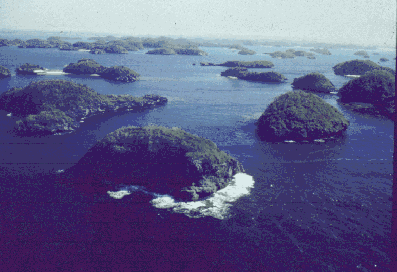 
Pangasinan, " Thousand Islands"
Sunset on Manila Bay
The Philippines is a nation of 7000 islands, over 70 dialects, and diverse religions.
The Philippines is also the third largest English speaking nation in the world, after England. It is a nation like no other in
Asia. The only predominantly Christian nation in Asia. Filipino people are a people of smiles in a land
of beauty...
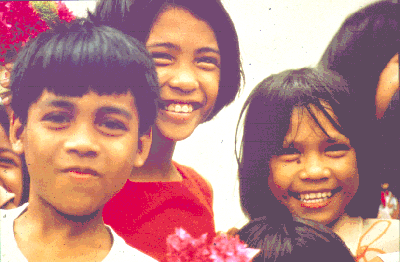 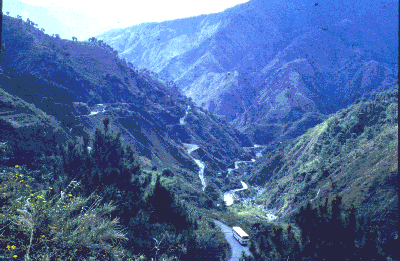 Smiling
Faces
Kennon Road near Baguio .
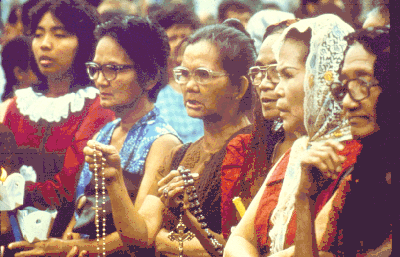 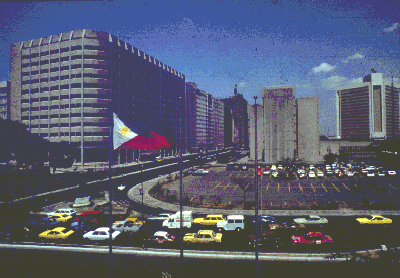
A people of fervent faith... A people struggling for prosperity enjoyed by its neighbors in Asia...
A people finding their identity in the world.
| 